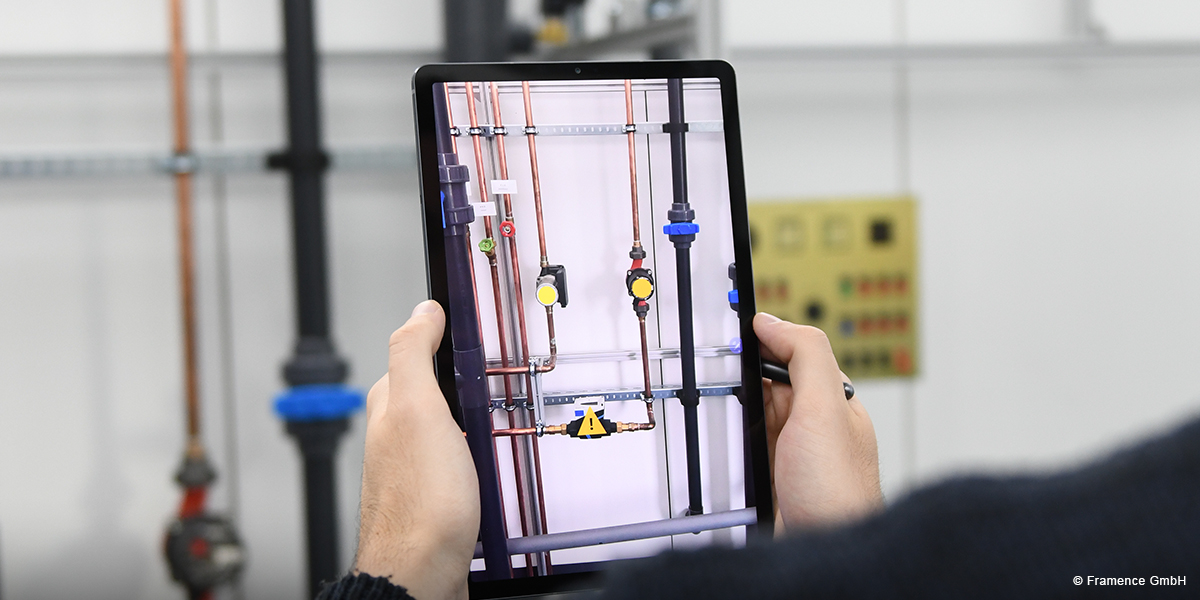Since Microsoft launched the first HoloLens in 2016, many companies have realized that augmented reality – i.e. the expansion of reality with digital content – can become a game-changer in many areas. Unfortunately, none of these use cases have really hit the market and have progressed beyond the status of being research projects or test projects. There are some exciting applications, especially in the consumer area; however, these cannot be transferred to commercial or industrial applications.
There are some reasons for this lack of market penetration of the technology.
In many cases, specialized glasses are used today to blend digital information with reality. However, these glasses are relatively expensive and are therefore not yet widely available in practice. The glasses also significantly restrict the user’s field of vision, which is simply not compatible occupational safety. Finally, the glasses are quite heavy, which makes long-term use rather difficult.
As such, the technological approach that is used for AR often stands in the way of its practical use. In most cases, the device used creates a 3D model of the environment in which the virtual content is then located and displayed. However, this focus on the end device prevents open systems into which ad hoc information can be imported or data can be exchanged with other devices. A change of hardware or collaborative work is almost impossible.
Due to the problems with the glasses, methods of integrating cell phones or tablets have been developed. The information is positioned via the location of the device used. This localization is carried out using markers of similar size QR codes that are attached in the physical environment. However, this is very time-consuming in terms of preparation and subsequent maintenance and is therefore not economically feasible in practice.
At FRAMENCE we believe that AR is and will be a game-changer. We have therefore developed a completely new approach that solves the existing problems and makes AR economically viable.
Until the glasses make a serious technological leap, we will only use tablets and smartphones as end devices. An advantage to this is since these devices are already in daily use in every company today, the question of availability does not even arrise. In addition, they are inexpensive and are already available in many different designs for industrial environments: “outdoor”, rugged environments, or even explosion-proof. Even concepts such as “bring-your-own-device” can be taken into account with our approach, which benefits a simple and, above all, fast implementation.
In the industrial environment, in particular, information must be displayed very precisely at the right place in reality. Information projected on the wrong pipe can lead to very expensive problems! To ensure an exact location and at the same time avoid the problems of physical markers, we use “dynamic markers”. These markers are automatically generated by an AI-supported process based on the images available in FRAMENCE. A corresponding algorithm on the tablet recognizes these feature points in the camera live stream and can then position itself accordingly. The time-consuming process of attaching and positioning markers is no longer necessary.
In addition to these technical refinements, the hybrid data model from FRAMENCE also offers another, very decisive advantage – 3D models are no longer absolutely necessary. As mentioned above, as the exact position of the device is known, we can also precisely position the camera live stream as well. The live stream of the device then simply replaces the existing FRAMENCE images and takes their place. All information from the hybrid model is also automatically available in AR. Existing points of information, 3D objects, live data from sensors and measuring devices or BIM models and floor plans can be located in the correct positions without any further action. The complete digital twin from FRAMENCE can therefore be easily transported into reality.
Since we always have live access to the central model, all changes or enhancements, regardless of where they are made, are always available immediately. This makes collaborative work by distributed colleagues possible without any problems. A specialist in the back office can, for example, pass on information to colleagues on-site on an ad hoc basis. The on-site technician can also enter important information directly via voice input or ask colleagues for advice.
With this combination of hardware available on the market, the latest IT technology, and our hybrid model, we have succeeded in liberating augmented reality from the laboratories and making it usable in practice. With FRAMENCE, you can also implement AR applications in your company quickly, easily, and above all cost-effectively.
Do not wait any longer and benefit now from the many possibilities that augmented reality offers you!








